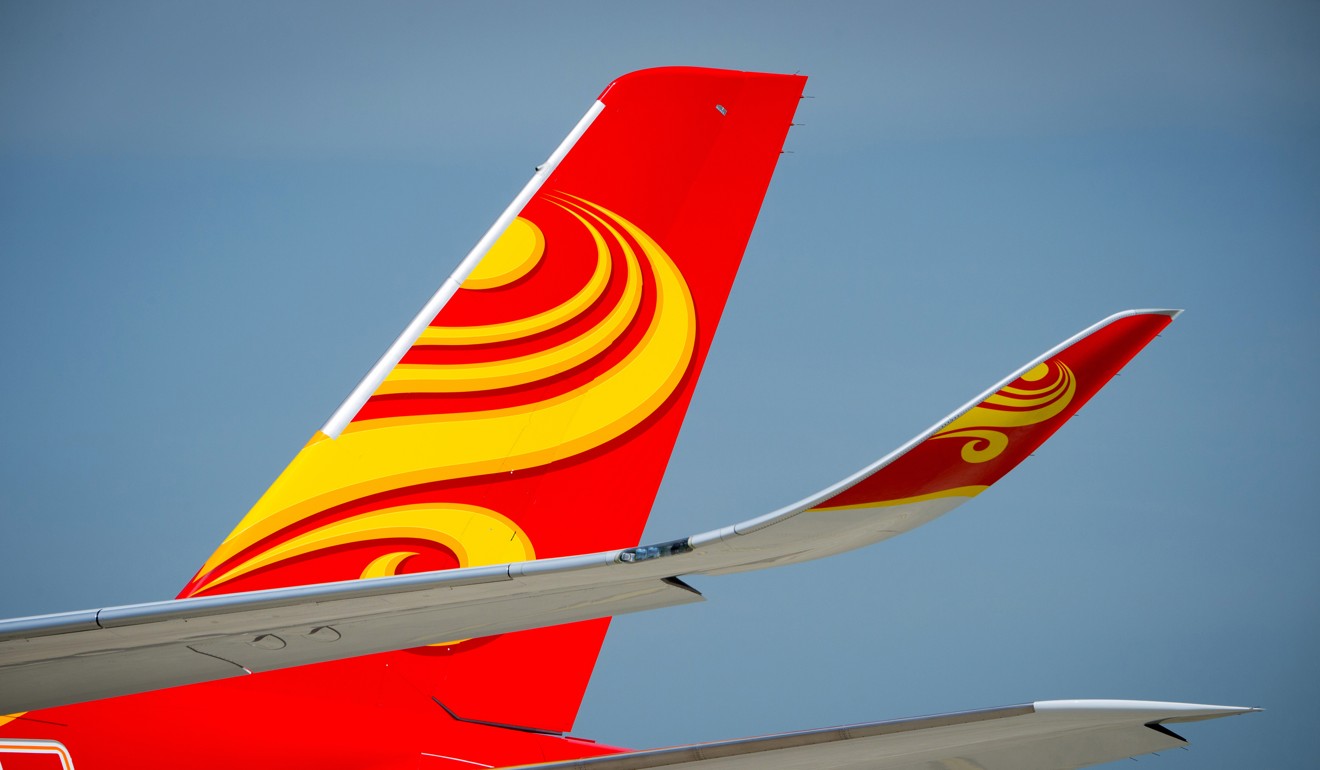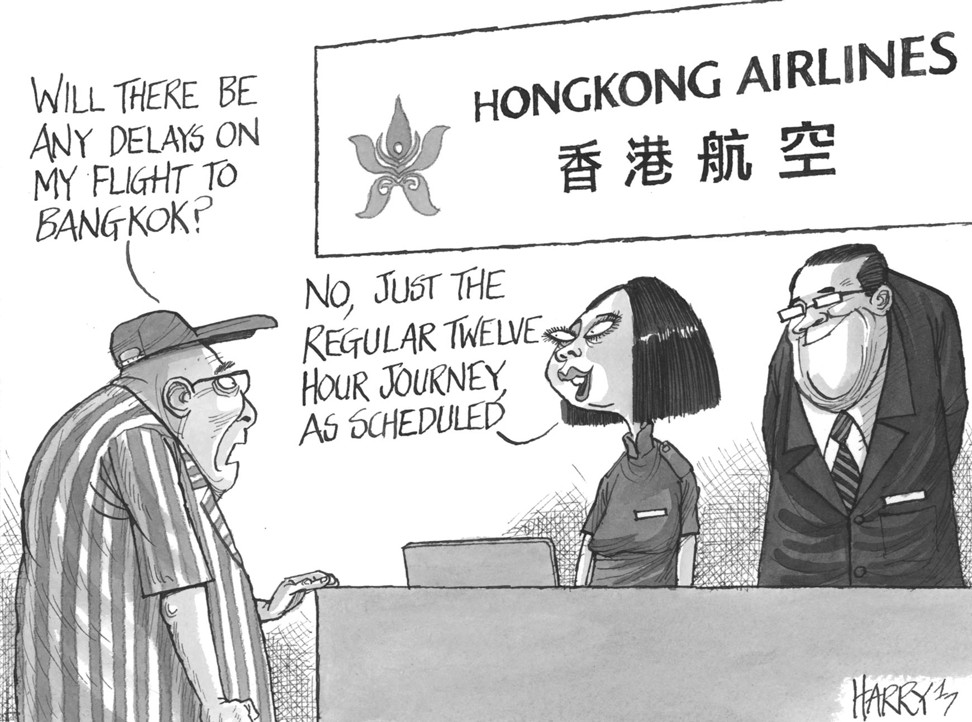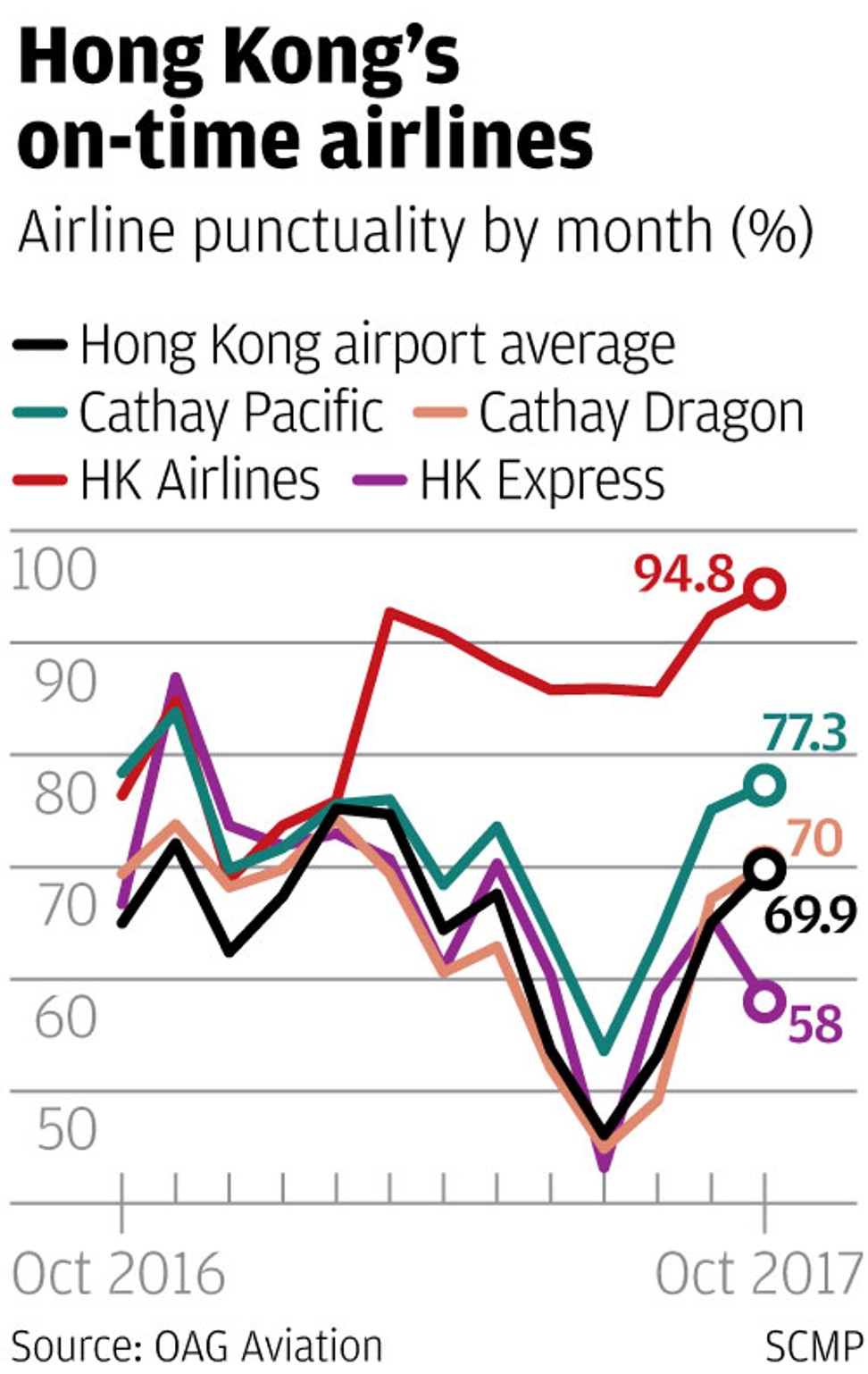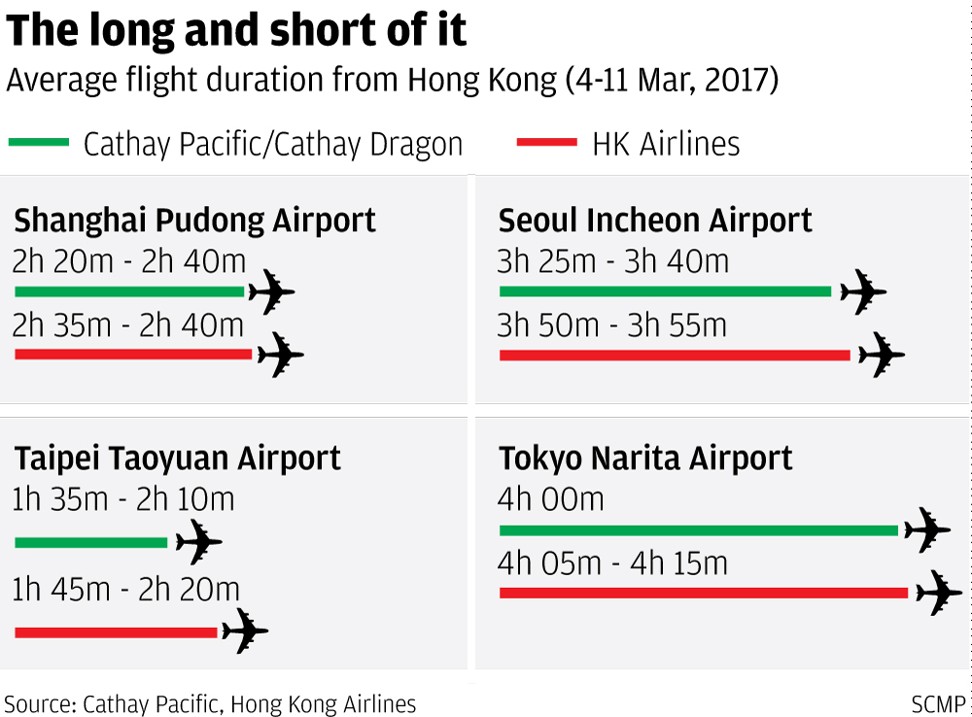
How Hong Kong Airlines became the world’s most punctual carrier
Airline has soared to top of global ranking with 94.8 per cent of flights in October arriving on time – but all may not be as it seems
Hong Kong Airlines has clocked up a remarkable turnaround in punctuality in the last two years, though this may have escaped the notice of their passengers, who now spend more time in the air.
A British company that analyses travel data said on Friday that Hong Kong’s No 3 airline had soared to the top of global punctuality rankings with 94.8 per cent of flights in October on time – classed as touching down within 15 minutes of the scheduled arrival.
But a review of the same data by the Post showed the airline had made flight times for a number of destinations longer – at around the same time as the improvements with punctuality began.
For Air China and Cathay Pacific, it’s one country, two airlines (but for how long?)
Flights to Tokyo Narita used to take 4 hours 10 minutes until March this year, when they started to take 4 hours and 40 minutes instead. For Taipei, half of the flights were expected to take 1 hour and 50 minutes, but many were now 10 to 15 minutes longer.
An extra five to 15 minutes was added to the bulk of the flights to Bangkok, previously expected to take 2 hours and 55 minutes, though there were also flights on this route that got shorter by about 20 minutes.
Hong Kong Airlines issued a robust defence of its practice, saying flight punctuality was an issue affecting the business and its image, therefore improvements were required.

“We saw on-time performance (OTP) was a problem, so we allowed extra time,” Tang King-shing, a vice-chairman of the airline, said.
Since the airline was founded in 2006, it has struggled with timekeeping. A little under two years ago, its flights regularly departed and arrived late, making it one of the worst offenders. Its planes were relegated to remote parking stands, which required passengers and crew to board and disembark using a bus. This meant it took much longer for passengers, especially those in transit, to reach their next flight, and more time to get a plane airborne again.
It moved into a new passenger terminal at the airport in 2016, with 99 per cent of flights using a jetty to board and drop off travellers, making it easier to stick to punctuality levels.
Punctuality of flights often influences how willing travellers are to book a flight and it also says more about the perception of how well run an airline is.
“Would you fly on a new airline with a poor OTP record? Apart from perception, we have to physically address the issue, so we can say, hand on heart, that we are an efficient airline,” Tang said.
Give us more flights, says Hong Kong Airlines executive
A review of Hong Kong Airport Authority flight arrival data showed Hong Kong Airlines landed more flights on time than Cathay Pacific, Cathay Dragon and Hong Kong Express. It was particularly successful with flights arriving early in the day, indicating a well-padded schedule at the airport.
A typical return trip on the same type of plane and around the same time of day to Beijing, Taipei and Tokyo Narita airport showed that Hong Kong Airlines’ flights were on average 25 minutes longer than Cathay Pacific’s.
Hong Kong air travellers enduring longer flight times as congestion and air traffic restrictions bite




